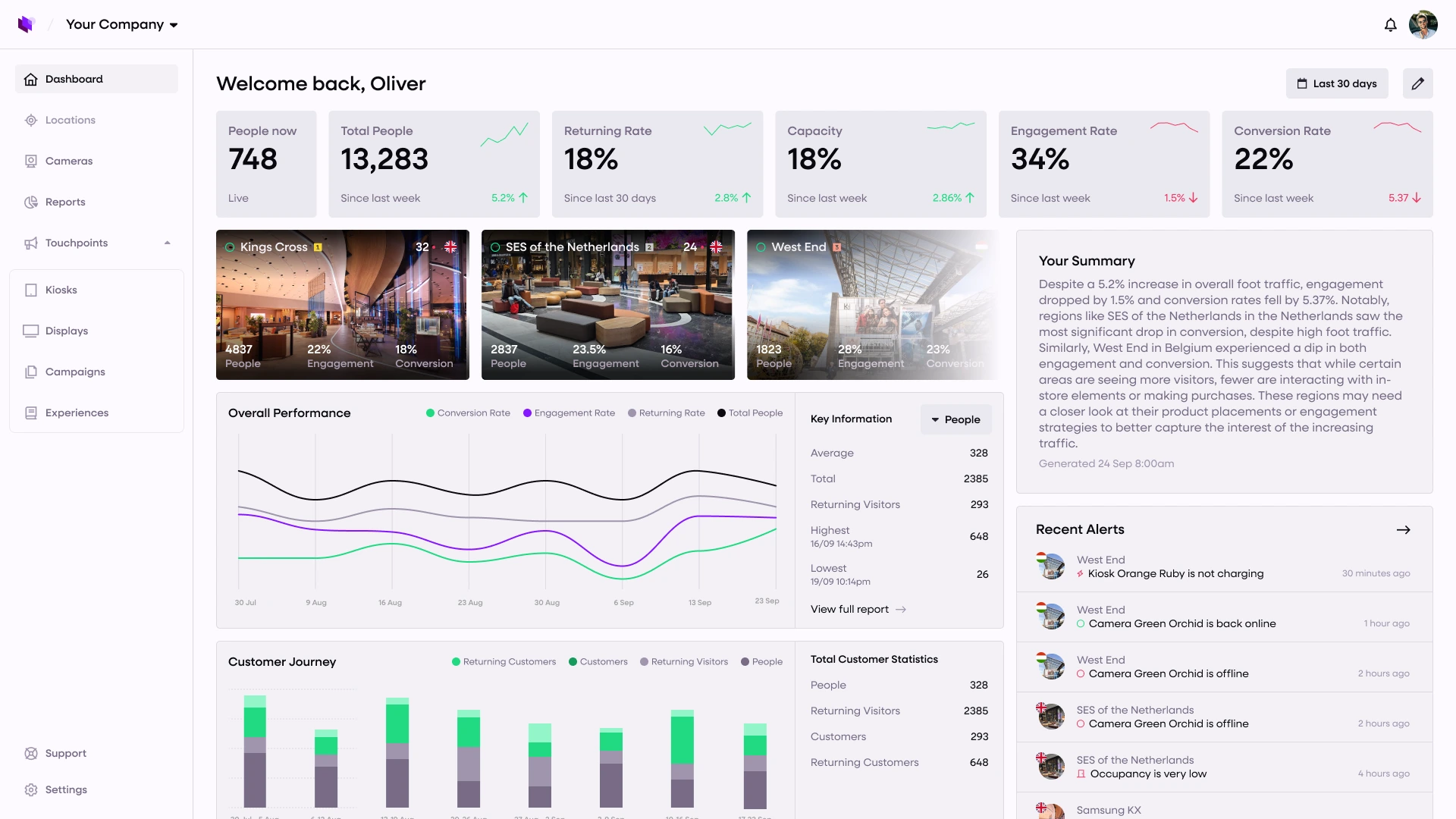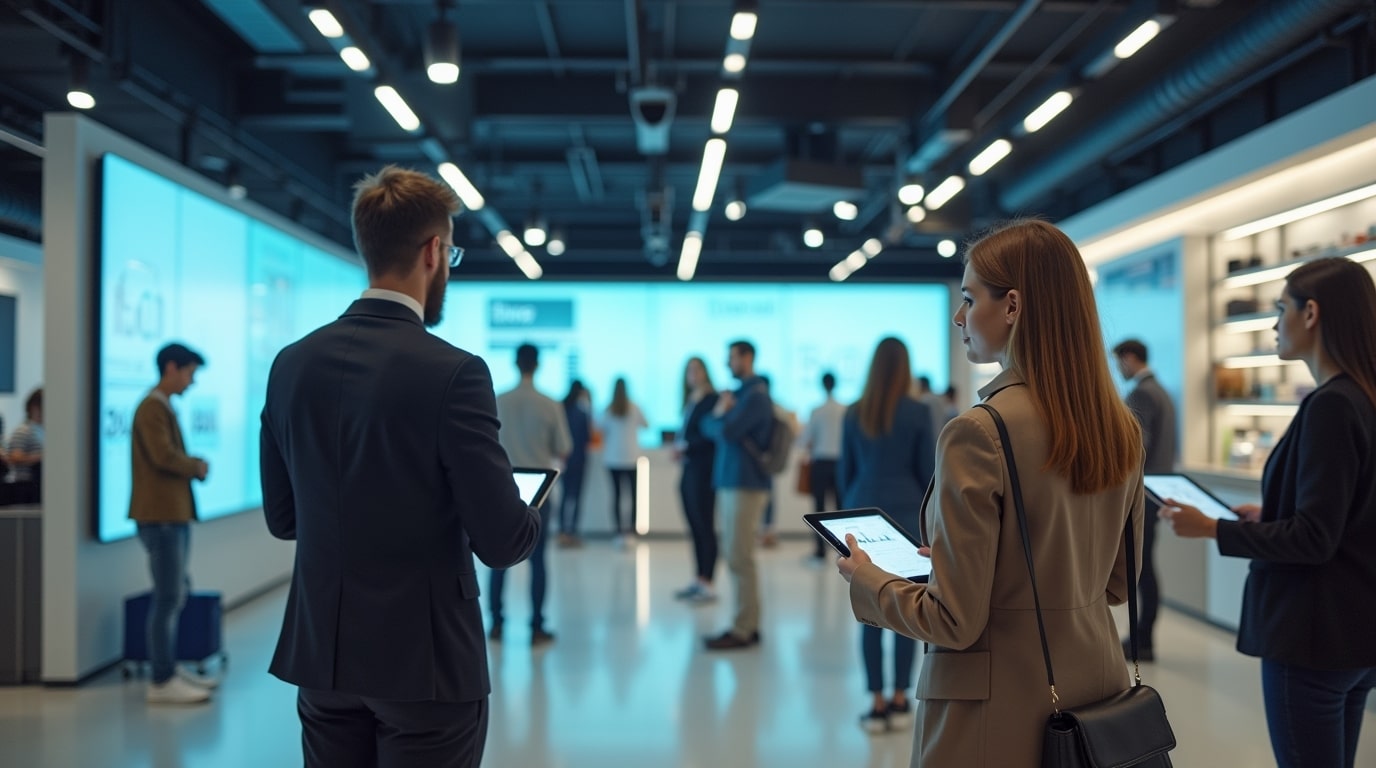


Reach out to us!
Start your AI journey today and let us help you understand your business better. Send us an email or book a meeting with one click!


Reach out to us!
Start your AI journey today and let us help you understand your business better. Send us an email or book a meeting with one click!
7th October 2025

Leo
As AI advances and are more commonly used, retail is no longer just about transactions, it’s about connection. In an era where shoppers browse online, check stock on mobile, and complete purchases in-store, the boundary between digital and physical has almost disappeared. Retailers that recognise this shift are now focusing on building “connected stores”: spaces where systems, data, and people work together to deliver a seamless experience.
Analysts from Forbes have predicted that unified commerce will be one of the defining forces of retail by 2026, transforming how brands interact with customers, manage inventory, and drive loyalty. The priority has now changed and the goal isn’t just efficiency, it’s experience.
Customers no longer think in channels. The common route starts with browsing a product on social media, test it in-store, then order it online for home delivery. To them, it’s one journey. For retailers, however, delivering that unified experience is far from simple.
According to research cited by Salesforce and similar retail intelligence reports, only 17% of retailers currently describe themselves as having reached “unified commerce maturity.” Nearly half admit they are still in the early stages of integration. Yet the economic case for full connection is compelling: mature unified commerce retailers achieve 23% higher inventory turnover, 22% lower customer acquisition costs, and 70% higher customer retention.
These numbers make a clear argument, connecting multiple channels isn’t just good for customer experience; it directly affects profitability.
The link between digital maturity and profitability is hard to ignore. During the pandemic, McKinsey found that the 25 top-performing retailers where majority of them are teach leaders were 83% more profitable than competitors and captured more than 90% of the total market-cap growth in the sector.
That surge wasn’t a coincidence, retailers who had already invested in connected systems, real-time analytics, and flexible fulfilment were able to pivot faster, keep stores open digitally, and meet new customer expectations almost overnight and those that hadn’t were left catching up.
As the report notes, digital leadership is now a predictor of market strength. Retailers that integrate data and technology into their daily operations don’t just move faster, they make smarter decisions and stay resilient when the market shifts.
While most retailers recognise the need for connected systems, the gap between ambition and reality remains wide. According to StartUs Insights, less than one in five brands feel they can deliver a fully connected experience today. Many are still working with isolated data, inconsistent customer insights, and fragmented platforms that make even simple questions like stock availability or campaign performance, painfully hard to answer.
For customers, that gap shows up as friction. They notice when an online promotion doesn’t match in-store pricing, or when loyalty points fail to appear after a purchase. In a connected world, inconsistency feels like incompetence.
Retailers who bridge this gap stand to gain a competitive edge with the capability of enabling their customers to move freely between channels and feel recognised at every step, as a result, they don't just buy more, they stay longer as well.
Imagine walking into a store that feels as smart as its website. The team begins their day with a single dashboard showing click-and-collect orders, footfall predictions, and product performance insights. Throughout the day, staff use tablets to check stock availability, suggest nearby stores for items out of stock, and adjust digital signage in real time based on visitor flow.
Meanwhile, the marketing team sees live campaign data from every location. A QR code placed near a new display is driving 200 scans per hour, while another in a quieter corner isn’t performing as well. Within minutes, the display is repositioned, and conversions climb.
None of this relies on guesswork, the connected store turns insights into instant action, empowering staff to make smarter decisions without waiting for head office approval.
The most successful connected stores make data invisible as teams don’t need to log in to multiple platforms or run endless reports. Insights simply appear where they’re needed, on tablets, digital screens, or mobile dashboards.
This system isn’t just about convenience. According to the same Salesforce research, retailers with mature unified commerce setups see higher productivity across teams and faster decision-making. When the technology fades into the background, it enables the staff focus on what matters: engaging customers and solving problems in real time.
Additionally, this approach also builds confidence as staff trust the numbers because they can see results immediately. A well-placed display shortens queues, a better product mix improves dwell time and data becomes part of the rhythm of the day rather than a disconnected afterthought.
McKinsey’s findings highlight the stark reality, digital maturity pays. But why does it make such a difference? The answer lies in decision speed and operational precision.
In a connected store, analytics feed into every choice, from staffing levels to campaign planning. If dwell time spikes in one department, scheduling software automatically suggests reallocating team members there. If an online campaign suddenly performs above expectations, inventory systems adjust orders to avoid stock outs.
The result is not only higher revenue but also lower operational risk, when teams have a single source of truth, they act faster, align better, and waste less.
It’s worth remembering that McKinsey’s 83% profitability advantage came during one of retail’s most volatile periods. The lesson is simple, connected retailers outperform in calm times and survive the storm when markets shift.
Technology can connect systems, but people connect experiences. Every tool in the world means little if teams don’t trust it or understand how to use it. This is where many digital transformations stall, not because of bad technology, but because of poor adoption.
Training, communication, and leadership involvement turn digital ambition into daily behaviour. When store managers open meetings by reviewing shared dashboards and celebrate staff who use data to solve problems, adoption becomes part of the culture and eventually the technology shifts from being “new” to being “how we work.”
This balance of human and digital capability is what makes the connected store sustainable. It’s efficient, but also empathetic. As we wants the customers feel understood, not monitored and staff feel empowered, not replaced.
Aside from improving the experience for mutual side, as sustainability becomes a central expectation nowadays, connected stores play a powerful role in reducing waste and energy consumption. Occupancy-based lighting, smart HVAC systems, and predictive maintenance can cut utility costs while lowering carbon emissions.
Harvard Business Review reports that consumers increasingly choose brands that demonstrate measurable environmental action rather than promises. When retailers connect data from energy systems, supply chains, and in-store operations, they gain visibility into where they can make real improvements and prove it to customers.
In this way, connectivity isn’t just about convenience; it’s about accountability.
The shift toward connected retail isn’t a distant goal, it’s already happening and Industry surveys suggest that 47% of retailers are in the early stages of implementing unified commerce strategies. Those who master it will enjoy faster inventory turnover, lower acquisition costs, and stronger customer retention, as Salesforce and other reports confirm.
The opportunity is enormous, but so is the responsibility as customers expect connection, not complexity . Retailers must make the technology seamless, transparent, and supportive of the in-store experience, not a distraction from it.
Retail’s future belongs to the connected. The next generation of retail leaders won’t compete on who has the biggest store or the loudest marketing campaign, but on who delivers the most consistent, trusted, and intelligent experience across every touchpoint.
The statistics tell a clear story, digital leaders are not only more profitable but more resilient. Unified commerce is no longer a buzzword; it’s an operational strategy that reduces waste, deepens loyalty, and sharpens performance.
The path forward is practical: start small, connect the right systems, and empower teams to act on insights daily and once the connections are in place, growth follows naturally.
👉 Want to see how a connected store can transform your retail performance? Discover how Merlin Cloud helps retailers unify campaigns, analytics, and customer experiences into one seamless ecosystem.